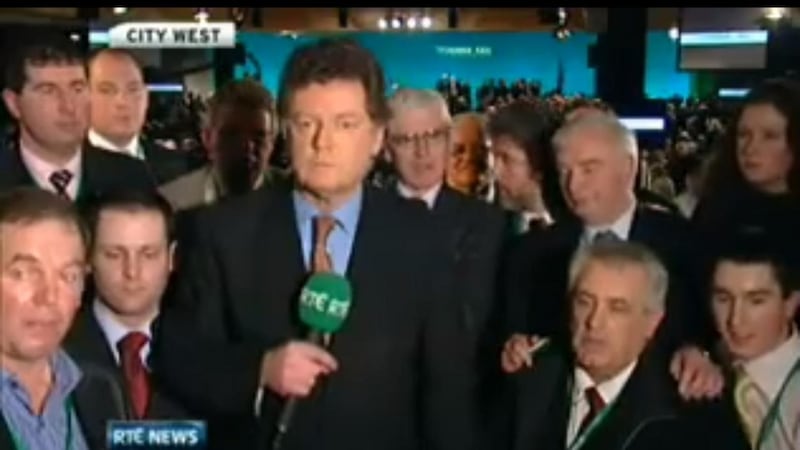Former Taoiseach Bertie Ahern has spoken of how he spent time with David Davin-Power shortly before the broadcaster’s death in Dublin’s Bon Secours hospital.
Davin-Power, best-known for leading the RTÉ coverage from Belfast during the period leading up to the Good Friday Agreement, died earlier this week at the age of 72.
Mr Ahern, a neighbour of his in Drumcondra, said he recalled great Christmas parties with the Davin-Power family and the late broadcaster’s colleagues.
Mr Ahern extended his condolences to Davin-Power’s wife Dearbhla Collins and the broadcaster’s five children.
Doctors initiate legal action over State’s transgender policy
How U2 drummer Larry Mullen jnr avoids conflict with neighbours: buy up all surrounding houses
‘I caught my husband masturbating with a male friend but he says it’s nothing’
Rory McIlroy’s spine-tingling third round puts him in control of his Masters destiny
He told RTÉ radio’s Morning Ireland on Friday: “I was with him yesterday evening, shortly before he passed, and I want to thank Dearbhla for that.
“He texted me the night before and it was a perfect text, so you know, the passing was quick at the end, and that was hard on the family.”
He said it was especially poignant to have lost Davin-Power in the same year as broadcasters Charlie Bird and Tommie Gorman, all of whom he had dealt with on Northern Ireland.
“But in one year, three, three wonderful people have passed.”
Mr Ahern recalled the events leading up to the Good Friday Agreement on April 10th, 1988, when journalists spent a week in the car park of Stormont Buildings in Northern Ireland as negotiations between political parties continued.
“It was bad enough inside, but he was out in that car park for a week, and it was cold weather, and he didn’t appreciate it,” Mr Ahern said.
Mr Ahern also recalled that Davin-Power, as RTE’s northern editor had covered “the multiparty talks in ‘91/92, then there was the Downing Street Declaration in ‘93, the cease fires in ‘94 then the talks from ‘95 of political agreement.
“And then he was there, you know, for the period afterwards, when we were working away on the reform of the policing. So it was like every evening he was on the news.
“He probably had a knowledge that nobody else had. The international journalists, I know, used to turn to him a lot because he was on the ground permanently.”
Mr Ahern and broadcaster David McCullough also jointly recalled how Davin-Power professionally handled a report from the 2009 Fianna Fáil ard fheis, when more than a dozen politicians clustered around him to ensure their faces were in the camera angle.
“I don’t know how that actually happened, but he had half the party in the shot with him, but it was amazing how he was able to keep a straight face,” said Mr Ahern.

Mr McCullough said “people look at that and they think he [Davin-Power] was standing on the floor and was surrounded with people, he wasn’t. He was on a rise or a small stage ‑ himself and the camera person ‑ and all these party colleagues of Bertie’s there got up on chairs so that they surrounded [Davin-Power] and one of them actually fell off the chair at one stage and then climbed back on again. And it was the most incredible thing. And as Bertie says, rightly, DDP just kept going.”
Elsewhere, tributes to Davin-Power were led by President Michael D Higgins.
In a statement, President Higgins said Davin–Power was “a consummate broadcaster and communicator,” and “a regular presence in the lives of so many people either over the airwaves or on television”.
Taoiseach Simon Harris said: “As a journalist and broadcaster, David was a trusted name who was welcomed into homes across the country throughout his long career.”
Mr Harris said Davin-Power “knew the Dáil inside-out, and in recent years, a witty and insightful columnist”.
- Sign up for push alerts and have the best news, analysis and comment delivered directly to your phone
- Join The Irish Times on WhatsApp and stay up to date
- Listen to our Inside Politics podcast for the best political chat and analysis












